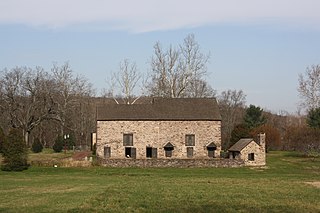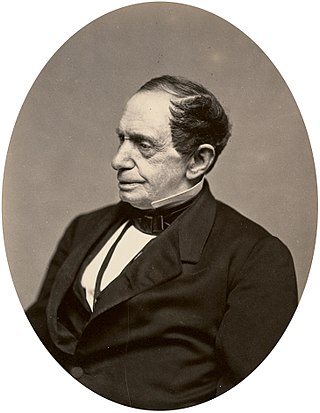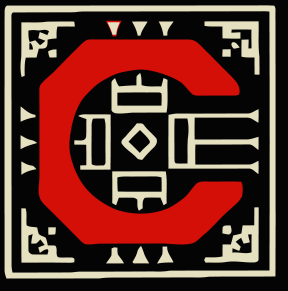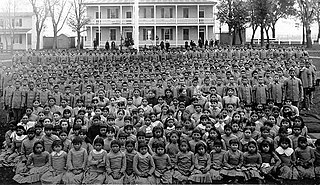Related Research Articles

Solebury Township is a township in Bucks County, Pennsylvania, United States. The population was 8,709 at the 2020 census.

Johns Hopkins was an American merchant, investor, and philanthropist. Born on a plantation, he left his home to start a career at the age of 17, and settled in Baltimore, Maryland, where he remained for most of his life.

Cheyney University of Pennsylvania is a public historically black university in Cheyney, Pennsylvania. Founded in 1837 as the Institute for Colored Youth, it is the oldest university out of all historically black colleges and universities (HBCUs) in the United States. It is a member of the Pennsylvania State System of Higher Education and the Thurgood Marshall College Fund. The university offers bachelor's degrees and is accredited by the Middle States Commission on Higher Education.

Lane Seminary, sometimes called Cincinnati Lane Seminary, and later renamed Lane Theological Seminary, was a Presbyterian theological college that operated from 1829 to 1932 in Walnut Hills, Ohio, today a neighborhood in Cincinnati. Its campus was bounded by today's Gilbert, Yale, Park, and Chapel Streets.

The United States Indian Industrial School in Carlisle, Pennsylvania, generally known as Carlisle Indian Industrial School, was the flagship Indian boarding school in the United States from 1879 through 1918. It took over the historic Carlisle Barracks, which was transferred to the Department of Interior from the War Department. After the United States entry into World War I, the school was closed and this property was transferred back to the Department of Defense. All the property is now part of the U.S. Army War College.

Brigadier General Richard Henry Pratt was an American military officer who founded and was longtime superintendent of the influential Carlisle Indian Industrial School at Carlisle, Pennsylvania. He is associated with the first recorded use of the word "racism," which he used in 1902 to criticize racial segregation. Pratt is also known for using the phrase "kill the Indian, save the man" in reference to the ethos of the Carlisle Indian Industrial School and efforts to assimilate and educate Native Americans about the western and American values of his time.

Carlisle Barracks is a United States Army facility located in Carlisle, Pennsylvania. The site of the U.S. Army War College, it is the nation's second-oldest active military base. The first structures were built in 1757, during the French and Indian War between Great Britain and France in the colonies.

The Institute for Colored Youth was founded in 1837 in Philadelphia, Pennsylvania, United States. It became the first college for African-Americans in the United States, although there were schools that admitted African Americans preceding it. At the time, public policy and certain statutory provisions prohibited the education of blacks in various parts of the nation and slavery was entrenched across the south. It was followed by two other black institutions— Lincoln University in Pennsylvania (1854), and Wilberforce University in Ohio (1856). The second site of the Institute for Colored Youth at Ninth and Bainbridge Streets in Philadelphia was added to the National Register of Historic Places in 1986. It is also known as the Samuel J. Randall School. A three-story, three-bay brick building was built for it in 1865, in the Italianate-style After moving to Cheyney, Pennsylvania in Delaware County, Pennsylvania its name was changed to Cheyney University.

Olney Friends School is a small, co-educational boarding and day school affiliated with the Religious Society of Friends (Quakers). Located in the foothills of the Appalachian Mountains in Barnesville, Ohio, the school "challenges students to grow, celebrates intellectual vigor, provokes questions of conscience, and nurtures skills for living in community." Students come from around Ohio, around the country, and around the world to study the college prep curriculum. Currently (2017-2018), the school is attended by 53 students from 14 US states and 10 countries.
Tullahassee Mission was a Presbyterian mission and school, founded on March 1, 1850 in the Creek Nation, Indian Territory by Robert Loughridge. This Presbyterian minister had been serving there since 1843, when he founded Koweta Mission. This mission was also originally built for Muscogee Creek students, and the community of Tullahassee developed there.

American Indian boarding schools, also known more recently as American Indian residential schools, were established in the United States from the mid-17th to the early 20th centuries with a primary objective of "civilizing" or assimilating Native American children and youth into European American culture. In the process, these schools denigrated Native American culture and made children give up their languages and religion. At the same time the schools provided a basic Western education. These boarding schools were first established by Christian missionaries of various denominations. The missionaries were often approved by the federal government to start both missions and schools on reservations, especially in the lightly populated areas of the West. In the late 19th and early 20th centuries especially, the government paid religious orders to provide basic education to Native American children on reservations, and later established its own schools on reservations. The Bureau of Indian Affairs (BIA) also founded additional off-reservation boarding schools based on the assimilation model. These sometimes drew children from a variety of tribes. In addition, religious orders established off-reservation schools.
Carthagena is an unincorporated community in Mercer County, Ohio, United States. It was established by African Americans was home to an agricultural and industrial boarding school for African American and Indian orphans. It has an elevation of 909 feet (277 m) and is located at 40°26′12″N84°33′36″W.

Thomas Indian School, also known as the Thomas Asylum of Orphan and Destitute Indian Children, is a historic school and national historic district located near Irving at the Cattaraugus Indian Reservation in Erie County, New York. The institution was first established in 1855 by missionaries Asher Wright and his wife Laura Wright to house the orphaned and kidnapped Seneca children of the reservation under the federal policy of forced assimilation. The complex was built in about 1900 by New York State as a self-supporting campus. Designed by the New York City firm Barney and Chapman, the campus contains the red brick Georgian Revival style main buildings and a multitude of farm and vocational buildings.

St. Charles Seminary is a former American Catholic seminary, founded by the Missionaries of the Precious Blood in 1861 in Carthagena, Ohio. The seminary closed in 1969 and is now a retirement center for clergy and lay people. The seminary, chapel, and five other buildings were added to the National Register of Historic Places in 1979.
The Kildonan School is a private coeducational boarding and day school in Amenia, New York, for students with dyslexia and language-based learning disabilities. It offered daily one-to-one Orton-Gillingham language remediation and a college preparatory curriculum for students in grades 2-12 and PG (post-graduate).
Hinsonville is a former municipality in Chester County, Pennsylvania which is now largely replaced by the grounds of Lincoln University. It was established and mostly populated by free African American residents, with the acres of Hinsonville being first purchased by Edward Walls, a free black man who was born in Maryland, in 1829. The town was named for its first permanent resident, Emory Hinson, another Maryland-born free black man. Located six miles north of the Mason–Dixon line and at the crossroads of Russellville-Elkdale Road and Oxford-Jennersville Road in the southern tip of Upper Oxford Township, the agricultural community of Hinsonville became an ideal residence for African Americans escaping slavery in neighboring Maryland from the 1820s to the 1850s. By 1843–1845, when the Hosanna Meeting House was established in town, Hinsonville had expanded considerably due to the flight of free black families from the South.

Robert Proud (1728–1813) was an English educator, Quaker and historian known for his research and writing about the Province of Pennsylvania.
Native American outing programs were associated with American Indian boarding schools in the United States. These were operated both on and off reservations, primarily from the late 19th century to World War II. Students from boarding schools were assigned to live with and work for European-American families, often during summers, ostensibly to learn more about English language, useful skills, and majority culture. Many boarding schools continued operating into the 1960s and 1970s.
Samuel Beecher Hart was a state legislator in Pennsylvania. He served multiple terms.
References
- 1 2 3 "Collection: Emlen Institution for the Benefit of Children of African and Indian Descent records | Archives & Manuscripts".
- 1 2 "St. Charles History".
- ↑ "Emlen Institute | Solebury Township Historical Society". 7 August 2015.
- ↑ "Collection: Emlen Institution for the Benefit of Children of African and Indian Descent records | Archives & Manuscripts".
- ↑ "Emlen Institute Support for Transferring Students to Carlisle | Carlisle Indian School Digital Resource Center".